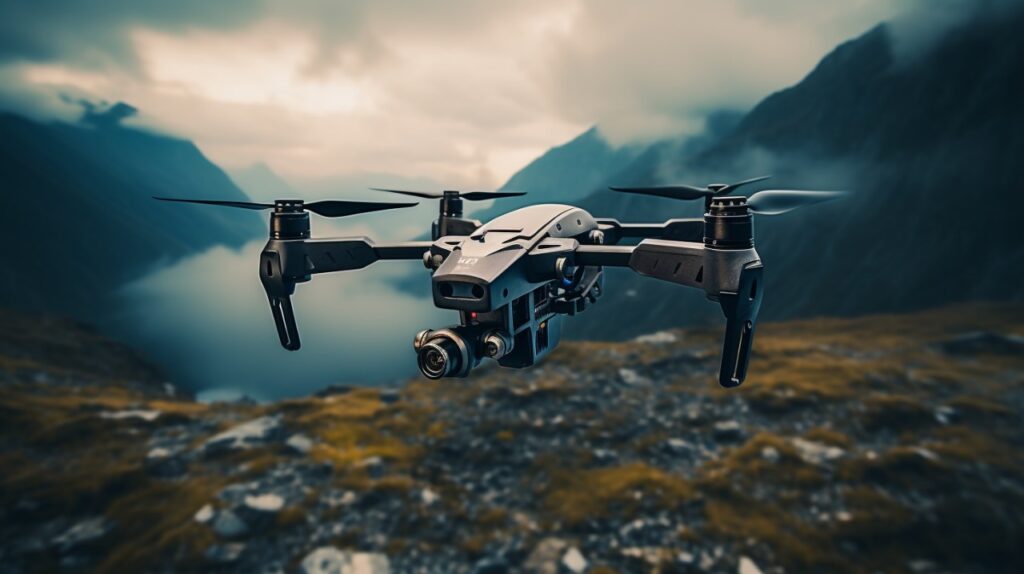In an era where technological innovation knows no bounds, drones have taken centre stage as a versatile tool with applications ranging from aerial photography to search and rescue operations. However, as drones become more accessible and affordable, they have also fallen into the hands of individuals with malicious intent. This alarming trend poses a significant threat to security, privacy, and public safety. In this blog post, we’ll delve into the prevailing threat of security concerns due to the illegal use of drones.
The Proliferation of Drones
Drones, formally known as Unmanned Aerial Vehicles (UAVs) or Unmanned Aircraft Systems (UAS), have soared in popularity in recent years. Their ability to fly autonomously or be remotely controlled from a distance has made them indispensable in various industries, including agriculture, filmmaking, and infrastructure inspection.
However, the very qualities that make drones invaluable for legitimate purposes also make them attractive to those with sinister intentions. The ease of purchase and operation, coupled with their capacity to carry cameras, sensors, and even payloads, has made them a tool of choice for a wide range of illicit activities.
Illegal Use of Drones: A Multifaceted Threat
The illegal use of drones presents a multifaceted threat to security and public safety. Here are some of the most concerning aspects:
- Privacy Invasion: Unauthorized drones equipped with cameras can invade personal privacy by capturing images and videos of individuals without their consent. This intrusive behaviour raises serious ethical and legal questions, particularly when drones are used to spy on private properties or in areas where people expect privacy.
- Espionage and Corporate Espionage: Nation-states, criminal organizations, and unscrupulous competitors have turned to drones as tools for espionage. Drones can be used to gather sensitive information, conduct industrial espionage, or even eavesdrop on classified communications.
- Terrorism: Drones have the potential to be used as delivery mechanisms for explosives, chemical agents, or other harmful payloads. This poses a significant threat to public gatherings, critical infrastructure, and security personnel.
- Contraband Delivery: Drones have been employed to transport illegal goods, such as drugs and weapons, into secure facilities like prisons. Their ability to fly over walls and fences makes them ideal for circumventing traditional security measures.
- Disruption of Critical Infrastructure: Malicious actors can use drones to disrupt critical infrastructure, including airports, power plants, and communication networks. Instances of rogue drones flying near airports have already led to flight delays and safety concerns.
- Identity Theft and Hacking: Drones equipped with hacking tools can intercept wireless communications, steal sensitive data, and even hijack other devices connected to the internet. This can have devastating consequences for individuals and organizations alike.
The Challenges of Drone Detection and Mitigation
Addressing the security concerns posed by illegal drones is not without its challenges. Traditional security systems, such as radar and surveillance cameras, may struggle to detect small, low-flying drones. Additionally, pinpointing the operator of a rogue drone can be a daunting task, as they can operate from a distance and often remain anonymous.
To combat this growing threat, various technologies and countermeasures are being developed. These include:
- Drone Detection Systems: These systems use a combination of radar, radio frequency (RF) detection, and visual recognition to identify and track drones in the vicinity.
- Anti-Drone Technology: Technologies such as jamming systems and net-carrying drones have been developed to physically disable or capture rogue drones.
- Regulations and Legislation: Governments around the world are enacting regulations to control the operation of drones. These regulations include nofly zones near airports and critical infrastructure, as well as registration requirements for drone owners.
- Public Awareness and Education: Educating the public about the responsible use of drones and the potential risks associated with illegal activities can help mitigate the threat. Encouraging drone operators to follow ethical guidelines and report suspicious drone behaviour is essential.
The illegal use of drones presents a complex and evolving threat to security, privacy, and public safety. As the technology continues to advance, it is imperative that governments, law enforcement agencies, and technology companies work together to develop effective countermeasures and regulations.
While drones have the potential to bring about positive change in various fields, their misuse cannot be ignored. Vigilance, awareness, and responsible drone operation are key components in addressing the prevailing threat of security concerns arising from the illegal use of drones. Only through a coordinated effort can we ensure that the skies remain safe and secure for all.


